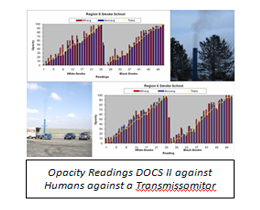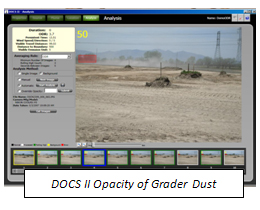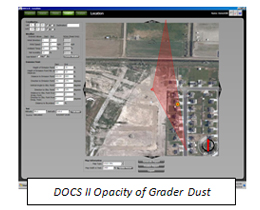Digital Opacity Compliance System (DOCS II SaaS)
The DOCS II SaaS project was initiated by the Department of Defense in 2003, with a goal of reducing the $15 million per
year the DoD spends certifying human Method 9 observers to observe sources regulated with opacity limits.
In 2006, VTLLC was contracted to test and validate the DOCS II SaaS prototype system. Upon completion of the
validation tests the USAF decided that the DOCS II SaaS system required a technology refresh and business process
improvement. VTLLC, working with multiple state inspectors, defined the user experience required to gain
acceptance from visible emission observers.
 VTLLC completely reengineered the DOCS and released DOCS II SaaS in 2008. DOCS II SaaS is a familiar, easy to use program
that reduces the time required for a Method 9 observation.
VTLLC completely reengineered the DOCS and released DOCS II SaaS in 2008. DOCS II SaaS is a familiar, easy to use program
that reduces the time required for a Method 9 observation.
Acceptance of DOCS II SaaS required two non-technical components:
1) A consensus standard that would allow the EPA and States to adopt DOCS II SaaS for visible emission observations.
2) DOCS II SaaS would have to be embraced by the existing smoke school infrastructure, to facilitate training, and distribution.
The ASTM standards committee D22 Air Quality, created ASTM D7520-09 "Standard Test Method to Determine the Opacity of
a Plume in the Outdoor Ambient Atmosphere using a Digital Camera Technique". ASTM D7520-09 was approved by ASTM, at
the October 2009 semi-annual committee week. ASTM D7520-09, is a performance standard dictating the certification
requirements for opacity measurement using digital cameras. DOCS II SaaS performed the D7520-09 certification process in 2009.
VTLLC partnered with the nation’s largest smoke school operator "Eastern Technical Associates"
to train and distribute DOCS II SaaS.
Training of DOCS II SaaS users will begin nationally in 2010. DOCS II SaaS offers many advantages to the field smoke reader:
field data is electronically acquired where possible, images of the visible emission, as well as, their opacity readings
are stored, along with the observers position relative to the visible emission, direction of view, distance from the
source, weather, and the position of the sun at the date/time/place of the observation.
 



<< Back to Regulatory Services
|




